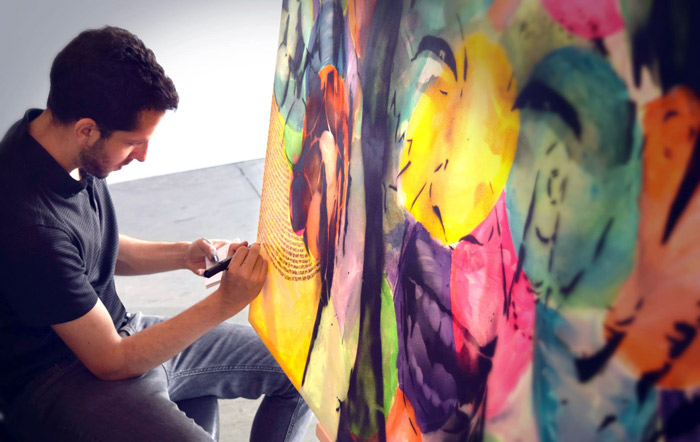A bus stop is a place of transition in the eyes of Montreal artist and McGill alumnus Aquil Virani. It’s an in-between where one finds a few moments away from the busyness of daily life. Out of the belief in the accessibility of art, Virani has transformed various bus stops around Montreal into temporary galleries.
Virani explained that his work, The Giveaway Project, is largely an effort to make someone’s day, make someone included, and generally bring happiness to the public. The project’s purpose also relates to what Virani calls “place-making.”
“So, having people come to a bus shelter that’s been sort of decorated, there’s some person that spent time on this and put it out here, and now the bus shelter feels a bit more human,” he said.
Virani doesn’t view himself as special for appreciating or creating art. He believes that every kid starts out with artistic inclinations.
“It’s only by getting a bit older and dealing with the pressures of not wanting to mess up that you start saying that you don’t like art, or ‘I’m not into art,’” he said.
In addition to striving for more accessible art, Virani questions the competition afflicting the art community. Before the rise of free websites and social media, competition was based on getting gallery exposure. Today, however, the true competition is in earning the viewer’s attention. People are exposed to a huge number of visuals each day and so the challenge for artists now is to impress the public rather than gallery institutions. This naturally leads to competition between artists. Virani envisions a world where artists collaborate rather than compete with one another.
“Although space is limited, what’s stopping me from having a joint show or promoting other artist’s work in addition to my own?” he said. “I do think there is a synergy, the simple idea that if you work together you’ll actually achieve both. You’ll both achieve more. Symbiosis. I think that exists in the art world.”
Virani chooses to focus on social issues rather than on what will sell. Focusing on pertinent topics gives immediate meaning to the artist’s work. He explains that even if the piece is not widely popular, it will still have value if it speaks to an audience’s social and political sensibilities. He wants to continuously push boundaries and, through his pieces, raise public awareness on topics such as identity, human rights, and originality.
“I believe that artists have not only a moral obligation to make art that is socially relevant, but they have a moral obligation to ensure that the message gets across,” he explained.
Virani is acutely aware of how his privileged past as someone who was able to go to university affects his work.
“If you’ve gone to university, you’re a part of that group–period,” Virani said. “So I’m always asking the question to myself, ‘How can I push a piece along the scale to get more towards an art that serves people, and empowers people, and educates people, and gets at issues?’”
When taking Montreal’s transit system, commuters should keep an eye out for the colourful and fun pieces by Aquil Virani. Virani’s efforts can feel positive and inspirational if one can take a moment to stop, enjoy, and appreciate it and its openness. Every one of Virani’s pieces is imbued with a strong sense of global awareness.
For this artist, the purpose of art is to create positive interactions with people, and leaving his art in bus stops is the best way to enable these interactions.
“The easiest way to circumvent that [question of] ‘What if no one buys my art?’ and ‘How do I get people to come to my gallery?’ is to bring the gallery to viewers.”









